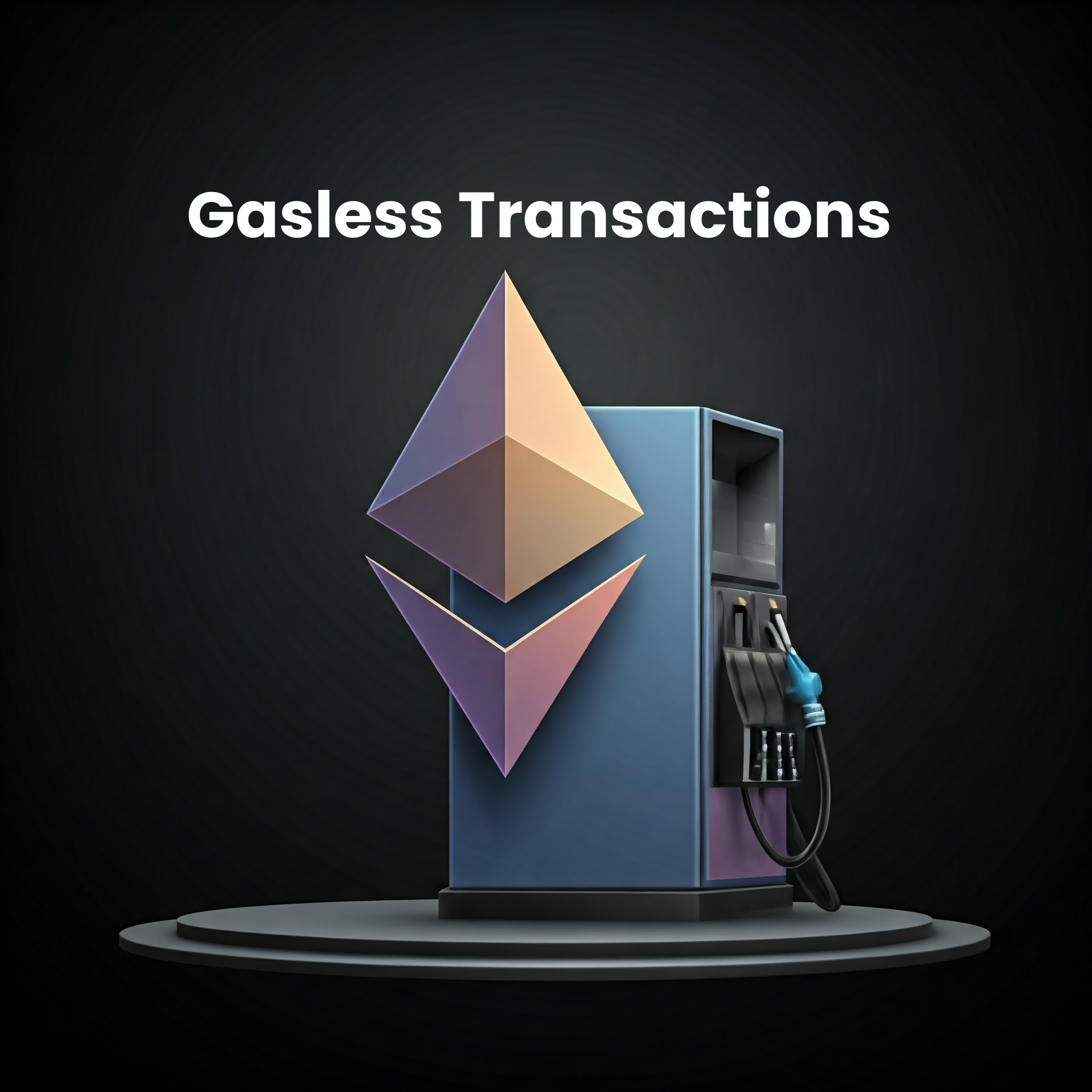
Blockchain technology has revolutionized the way we do digital transactions. However, the requirement for users to possess native tokens to pay gas fees is a significant barrier to adopting blockchain technology on a large scale. Gasless transactions, which are implemented using meta-transactions and relay networks, offer a solution to this challenge by allowing users to create transactions and interact with the blockchain network without holding its native tokens to pay gas fees.
Background
Traditional Transaction Model
In current blockchain networks, users must possess some native tokens (e.g. ETH for Ethereum, MATIC for Polygon, etc.) to pay the gas fees, which essentially are the transaction fees required to create a block of the transaction on the blockchain network. Once the transaction is signed and the user pays gas fees, the transaction is added to the blockchain network.
This requirement generally creates friction for users new to the blockchain world and limits their accessibility to decentralized apps (dApps).
Meta-Transactions
Meta-transactions separate the act of signing a transaction and paying the gas fees required for that transaction. Through this separation, we can allow a third party (a relay server) to pay the gas fees and submit the transaction to the network on behalf of the original user while maintaining the security and authenticity of that user.
Implementation Architecture
Components
The gasless transaction system primarily consists of these components:
1. End-user: Signs the transaction message containing transaction details.
2. Relay Server: Manages the transaction submission and gas fee payment.
3. Smart Contract: Validates the signature and executes the intended action.
4. Gas Tank Contract: Manages gas fee allocation and reimbursement.
Technical Flow
Figure 1 given below illustrates the flow of a gasless transaction in a very simplified manner:
Figure 1
Implementation of Gasless Transactions
There are currently a few ways through which we can implement gasless transactions in our dApps. The two most popular ways of implementing gasless transactions are using:
1. OpenGSN (Gas Station Network)
OpenGSN provides a decentralized relay network for gasless transactions. It implements a robust meta-transaction protocol that efficiently handles transactions.
OpenGSN also provides simplicity in developing gasless dApps as very few modifications are required over existing smart contracts to enable gasless transactions through them.
2. Biconomy
Biconomy offers a middleware solution for enabling gasless transactions. They offer an SDK (software development kit), which heavily focuses on simplifying the implementation of gasless transactions in a dApp. Biconomy also offers cross-chain compatibility, which allows users to execute gasless transactions on multiple chains using the same signature, without the requirement of having native tokens of the chains on which the transaction is executed.
Conclusion
Gasless transactions are a crucial development that is helping to make blockchain technology accessible to mainstream users by abstracting away the prerequisite of users owning the native tokens of certain blockchain networks. With this, the gasless transaction technology is able to bridge the gap between Web2 and Web3 user experiences. The continued evolution of this technology, coupled with improvements in scalability and interoperability, positions gasless transactions as a fundamental building block for creating more accessible and user-centric dApps.
References
Abstract As autonomous vehicles (AVs) revolutionize the future of mobility, cybersecurity risks emerge as a critical challenge. This article delves into the vulnerabilities in...
Leukemia, a life-threatening cancer affecting the blood and bone marrow, necessitates early detection for better treatment outcomes. Traditional diagnostic techniques, particularly the manual blood...
Blockchain technology has revolutionized the way we do digital transactions. However, the requirement for users to possess native tokens to pay gas fees is a significant barrier to adopting blockch...
Efforts made by a group of individuals are always superior to that of an individual. The reason for this is very simple: When a group of individuals works together to accomplish a task, an intellig...